



Get new exclusive access to healthcare business reports & breaking news




Data loggers are key pieces of your organization’s monitoring equipment. These devices monitor such critical environmental variables as temperature, humidity, and pressure to help you gain a head start on mitigating excursions and protecting your valuable assets.
Data logger design has made major strides from its earlier relative: paper chart recorders that required on-site, in-person data collection. Today’s digital data loggers (DDLs) feature cloud-based remote monitoring capability, Internet of Things (IoT) integration, and a myriad of powerful wireless technologies.
Not all data loggers are the same, of course. First of all, numerous brands offer industry-specific data loggers with a wide range of features, functions, and technological abilities. To help you make the right choice, here is a list of the 8 best data loggers to buy this year.
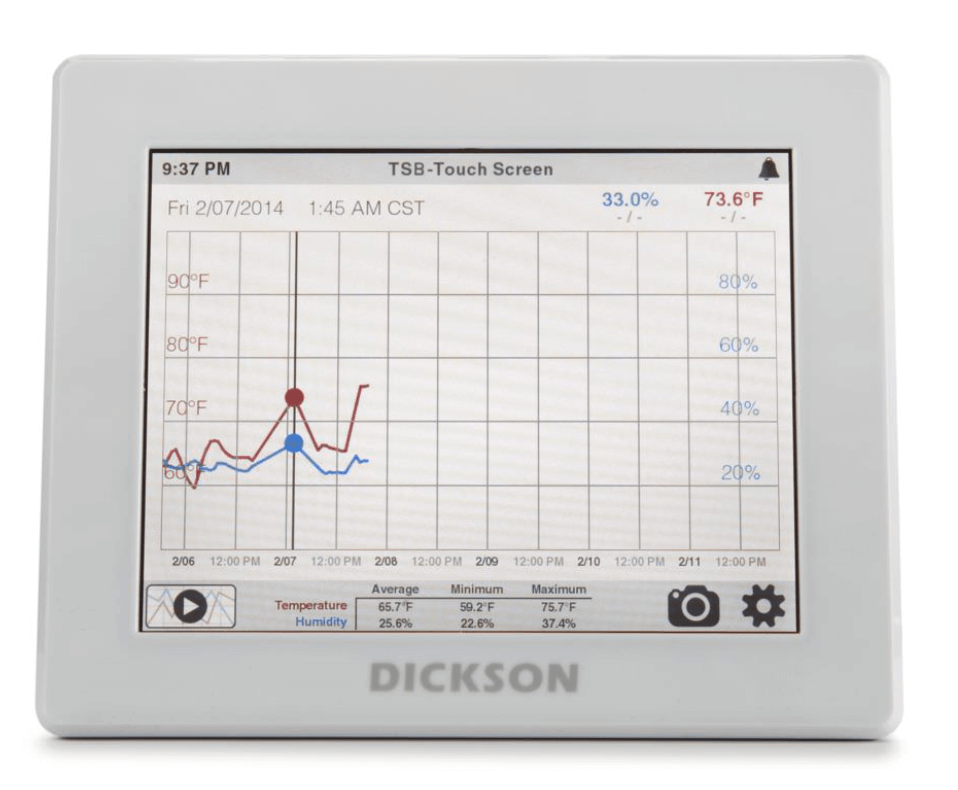

Product: DicksonOne (Touchscreen Data Loggers)
Score: 9.9/10
Specs:
● Measuring range: 0 to 95% for RH; 14 to 140°F (-10 to 60°C) for temperature
● Battery type: Rechargeable Backup Battery
● Communication: WIFI + Ethernet
● Accuracy: ±2.0% RH; ±0.8°F/±0.4°C
● Dimensions/Weight: 8.5 x 1.75 x 7.0″/1.45lbs
● IP Rating: IP21
● Input number: 2 channels
● Sampling rate: 60 seconds, 90 seconds, 2 minutes, 5 minutes, 10 minutes, 30 minutes, 1 hour
● Battery life: 70 hours of battery backup
● Data capacity: 1 million sample points
Product Description
DicksonOne is a cloud-based system comprising a network of touchscreen, display, or RF display data loggers. Together, they form a robust remote monitoring solution that keeps track of environmental parameters, including differential pressure, humidity, and temperature.
What ultimately makes this one stand out from the pack is that it is an all-in-one platform. You can add or remove as many data loggers as you want to suit your environmental monitoring needs. With this cutting-edge platform, healthcare, pharmaceutical, and other highly regulated industry players can easily stay compliant with applicable regulations.
Pros:
Cons:
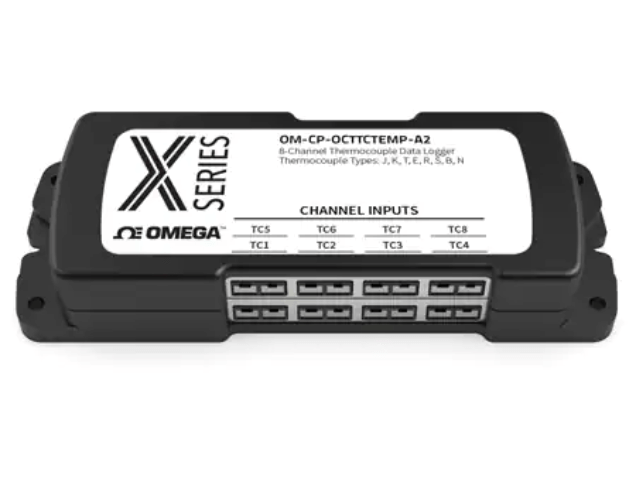

Score: 9.5/10
Specs:
Product Description
OM-CP-TCTempX Series is a line-up of multichannel thermocouple data loggers from Omega Engineering. It consists of between 4 and 16 channels with a maximum reading rate of 4Hz. USB-based loggers offer free integration with Omega software.
Although this model comes up short in terms of accuracy and variability compared to the DicksonOne, the Xseries allows users to disable and enable channels to optimize memory capacity.
Pros:
Cons:
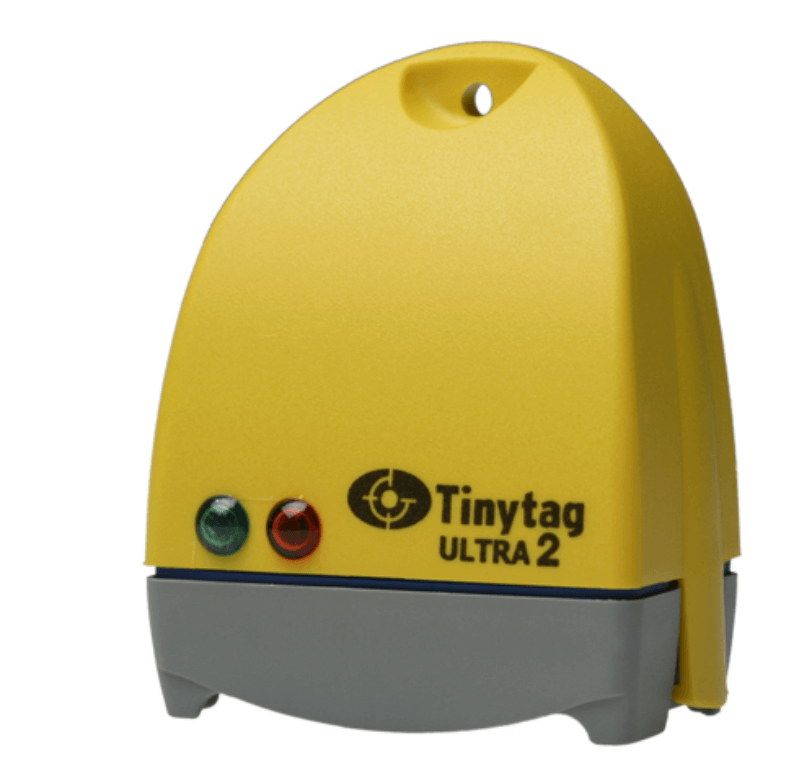

Product: Tinytag Ultra 2 TGU-4500
Score: 9.4/10
Specs:
● Measuring range: 0 to 95% for RH; -13°F to +185°F (-25 to 85°C) for temperature
● Battery type: ½AA 3.6V Lithium battery
● Communication: USB
● Accuracy: ±0.1 °C (-25 to 85°C)/±3.0% RH at 25°C / 77°F
● Dimensions/Weight: Up to 2.83 x 2.36 x 1.30″/55 g
● IP Rating: IP53 (Splash-proof)
● Input number: 2 channels
● Sampling rate: 1 second to 10 days
● Battery life: 24 months (2 years)
● Data capacity: 32,000 readings/samples
Product Description
TGU-4500 is top of the Tinytag range of Gemini data loggers. It monitors relative humidity (RH) in the 0-95% range and temperatures in the -25 to +85°C range. It is specially designed for indoor monitoring but can be used outdoors with proper waterproofing protection. Overall, the product is compact, rugged, and accurate for industrial applications.
Pros:
Cons:
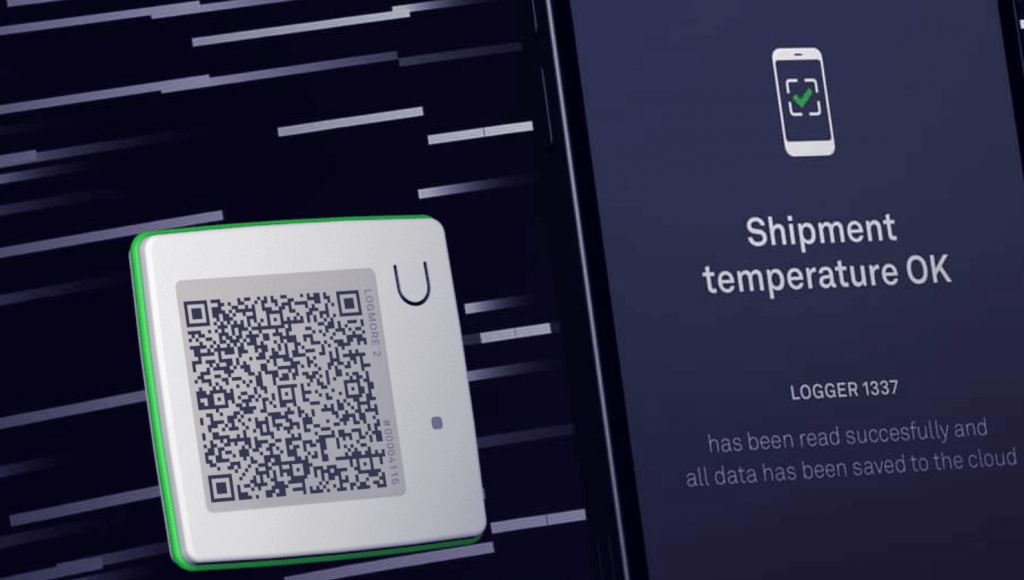

Product: Logmore Guardians Data Loggers
Score: 9.4/10
Specs:
● Measuring range: -100°C to +110 °C
● Battery type: AAA battery
● Communication: Dynamic QR Code (via Bluetooth)
● Accuracy: ±0.2°C / ±0.4°F
● Dimensions/Weight: Up to 0.125 x 6.25 x 9″/
● IP Rating: Not rated
● Input number: multi-channel
● Sampling rate: Between 1 minute and 12 hours
● Battery life: 227 days
● Data capacity: More than 62,000 reading points
Product Description
Guardian data loggers often come as part of Logmore core products which are specialized for cold chain freezers and dry ice. They operate via a dynamic QR code. Built-in sensors measure selected conditions, including tilt, location scanning, humidity, temperature, shock, and light.
Although it interfaces with a cloud-based system, the Logmore lags behind DicksonOne in that the QR code must be manually scanned. Given this, a monitoring system based exclusively on Logmore data loggers can be difficult to scale up.
Pros:
Cons:
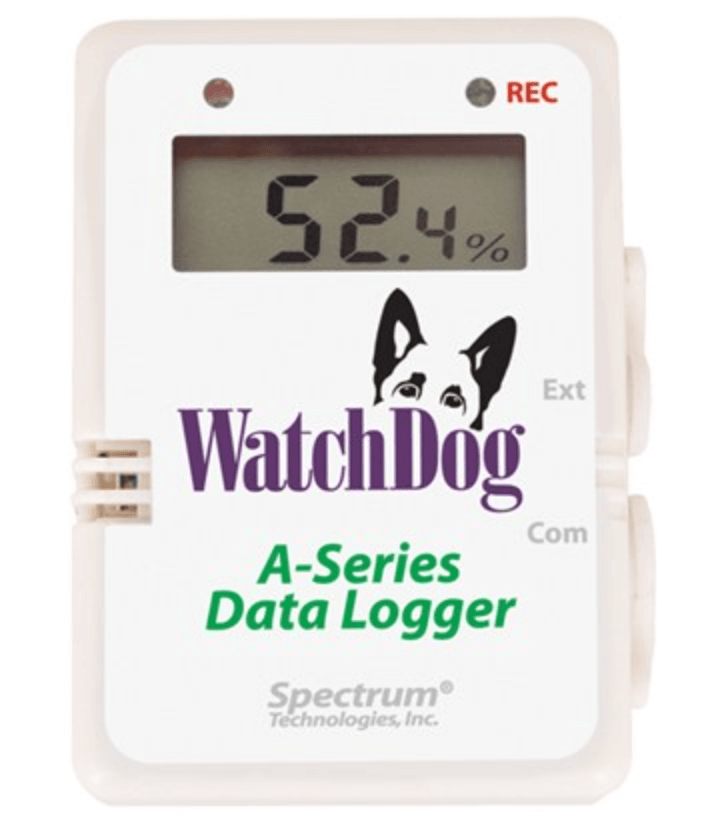

Product: WatchDog A-Series Loggers
Score: 9.2/10
Specs:
● Measuring range: -40 to 185ºF (-40 to 85ºC) for temp; Range 0 (Dry) to 15 (Wet) for leaf wetness; 0 to 9999 PPM for CO2, and 0 to 100% for RH
● Battery type: CR2 battery
● Communication: USB
● Accuracy: ±1.1ºF (±0.6°C) at -4 to 122°F (-20 to 50°C), else ±2.2°F (±1.2°C) for temp; ±50 PPM for CO2; ±3% at 77°F (25°C) for RH
● Dimensions/Weight: N.A.
● IP Rating: IP65/IP54
● Input number: 4 channels
● Sampling rate: Between 1 minute and 120 minutes
● Battery life: 12 months
● Data capacity: 10,666 data points
Product Description
WatchDog A-Series loggers are designed for environmental monitoring, much like the DicksonOne. However, they seem to be geared towards agriculture and soil health monitoring. They are equipped with built-in sensors for measuring leaf wetness, relative humidity, CO2 level, and temperature.
The data must be downloaded via USB and viewed using proprietary software. No remote monitoring is possible.
Pros:
Cons:


Score: 8.9/10
Specs:
● Measuring range: -30 to +70 °C
● Communication: USB
● Battery type: 2 x 3V button cell (CR 2032)
● Accuracy: ±0.5 °C (-30 to +70 °C)
● Dimensions/Weight: 60 x 38 x 18.5 mm/35g
● IP Rating: IP65
● Input number: 1 channel
● Sampling rate: 1 minute to 24 hours
● Battery life: 500 days at 15-min measuring cycles
● Data capacity: 16,000 measurements
Product Description
Testo 174 T is a temperature data logger geared towards the pharmaceutical and food industries. It helps organizations meet storage temperature requirements between -30 to +70 °C. It only offers USB download and software for data read-outs and archiving, which makes it a relatively basic data logger, especially when compared to modern systems like DicksonOne.
Pros:
Cons:
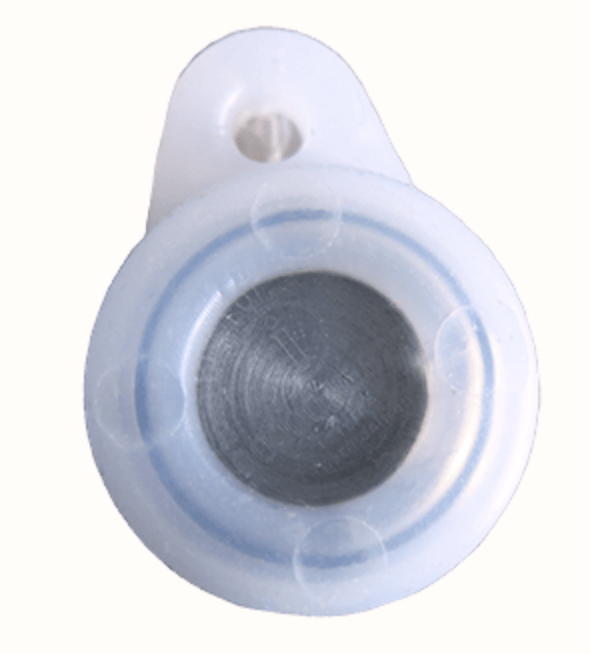

Product: iBee High-Temperature Data Loggers
Score: 8.8/10
Specs:
● Measuring range: 0°C to 125°C (autoclaves); 15 to 140°C (Sterilization)
● Battery type: N.A.
● Communication: USB+Ethernet
● Accuracy: ±0.5°C
● Dimensions/Weight: 27 × 20 × 7.5 cm/5g
● IP Rating: Not rated
● Input number: 2 channels
● Sampling rate: 1 second to 273 hours
● Battery life: up to 10 years (autoclave); 30 to 50 sterilization cycles (sterilization)
● Data capacity: 8192 or 4096 readings (Autoclave); 8192 or 4096 readings (Sterilization)
Product Description
iBee is a line of waterproof, submersible high-temperature data loggers. They are specifically designed for autoclave and sterilization oven monitoring. Users say they are also great for cooking process optimization, temperature traceability, and meat processing.
Pros:
Cons:
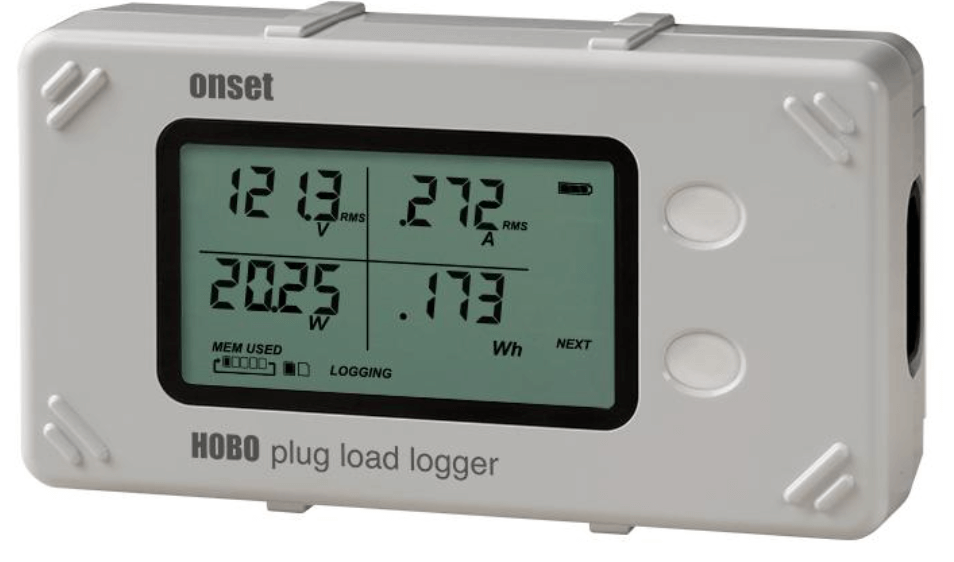

Product: HOBO UX120-018 Data Logger
Score: 8.6
Specs:
● Measuring range: 5° to 40°C; 0 to 95% RH, up to 2,000 m (6,562 ft) altitude
● Battery type: 2x AAA 1.5 V alkaline batteries
● Communication: USB 2.0
● Accuracy: ±0.5%; ±0.02 for power factor
● Dimensions/Weight: 13.97 x 7.62 x 4.75 cm (5.5 x 3 x 1.87”)/230.8g
● IP Rating: IP50
● Input number: 4 channels
● Sampling rate: 1 second to 18 hours, 12 minutes, 15 seconds
● Battery life: 2 years with line power; 6 months battery only
● Data capacity: 1.4 million measurements
Product Description
HOBO UX120-018 is an easy to deploy, high-accuracy data logger for measuring and monitoring energy consumption, temperature, relative humidity, and altitude. Applications include vending machines, office equipment, and more.
Pros:
Cons:
A data logger is a small electronic item designed to track, store, and document selected conditions via built-in or external sensors. These include sensors for: temperature, vibration, pressure, humidity, voltage, shock, tilt, and location.
Modern data loggers are usually compact, battery-powered, and fitted with a memory chip for data storage. Replacing chart recorders, this equipment has become the standard method to log data and monitor environmental conditions in most highly regulated industries.
Data loggers are typically employed for critical tracking of environmental parameters such as pressure, humidity, and temperature for the manufacture, storage, and distribution of safe products in many industries. These include:
● Food and beverage production and logistics
● Aerospace
● General manufacturing sector
● Healthcare industry
● Pharmaceutical industry
● Medical device industry
● Environmental research
Many different types of data loggers are available. The most common types are:
● Humidity data loggers –collect, record, and store relative humidity/moisture level data
● Temperature data loggers –log and document product or process temperature data
● Pressure data loggers –typically used to monitor vacuum, atmospheric, and gauge pressure, with selected models designed especially for logging differential pressure
● Open/close data loggers – used to monitor environments or enclosed spaces that can be compromised if doors are opened and closed too often.
● CO2 data loggers – mostly used to monitor indoor air quality in industrial settings, residential buildings, and other critical applications.
– Type of Sensory Inputs
When comparing different data loggers, key considerations are where and how they will be used. A major distinction is the calibrated sensors the data logger includes.
Most data loggers featured on this list are compatible with most input signals. However, some models are dedicated to a specific sensory input (e.g., temperature, humidity, pH, CO2 levels, or pressure.
Top-of-the-line models are customizable. They can be programmed to simultaneously accept many different types of sensory inputs. Other data loggers are designed for various input signals, such as tilt, shock, humidity, sound, thermocouple, location scan, and much more.
– Number of Inputs
Data loggers are primarily data acquisition devices, so it is important to take into account the number of inputs integrated into the design. Standard models are single-channel or multi-channel designs. Some high-end models can handle 32 or more input channels.
– Monitoring Range
Depending on the variable tracked, data loggers can vary greatly in range. Look for one that caters to your targeted range. For instance, the best pressure data loggers on the market can be configured to cover 0-100 PSI, 0-300 PSI, or 0-500 PSI range.
– Download Type and Time
If you want versatility, invest in data loggers that allow downloading of data in several ways. The most common download types include USB, SD, wireless, and RFID.
The faster the data logger can download information, the better it is for quick response to problems and excursions from stipulated conditions.
– IP Rating
IP rating denotes the level of protection the data logger’s electrical enclosures and casings provide against water, accidental contact, dust, and intrusion. An IP 68 rating, for instance, means the data logger is submersible to a depth of 1.5 meters.
An IP 67-rated logger means its probe is submersible, can withstand dust, cleaning, and spray-downs.
– Size
The size of the data logger itself matters, too. The Dickson Pressure Logger, for instance, is available in varying sizes to suit individual needs. Some are extremely compact, making them a great choice for the tightest areas of application.
– Battery Life
Pay attention to rated battery life when comparing data loggers. This can be vital if you intend to install the data loggers for the set-it-and-forget-it operation. Most data loggers with LED screens tend to sacrifice battery life for easy reading and other features.
The best loggers typically offer 6-9 months of battery life at a standard 30-second or 1-minute sampling rate. Be sure the battery life rating matches your needs.
– Software Integration
Just like other electronics, data loggers are connected to software systems with distinct features and functions. Examine what software is available for the logger you intend to purchase. Does it offer web-based software access, remote monitoring software capacity, or QMS software integration?
– Memory/Speed
Some digital data loggers, like those from Dickson, come with real-time data logging and retrievals. However, the vast majority have sampling rates that range from 1 second all the way to 24 hours. Those that store data internally usually have the lowest sample rates.
The more frequent the data sampling rate, the more memory you’ll need. Be sure to check sample duration, sample rate, and data storage capacity.
– Key Features
For an unparalleled data logging experience, look for the following crucial features:
● Customization – Look for data loggers that can generate custom alerts, reports, and trends
● Security –With cases of data breaches on the rise, select data loggers with military-grade security for unrivaled reliability and safe data transmission.
● Real-time accessibility – The ability to view collected data any time, from anywhere with a remote monitoring platform (via smartphone, PC, tablet, etc.) is a necessity in most cases.
● Regulatory compliance – Any data logger must be industry certified and compliant with VFC, ISO, FDA regulations, and others, as specified by your industry.
● Automated – The loggers must be able to automatically transmit data to your servers or the cloud to minimize human interruptions and free up your workforce
● Variability – Is the data logger configurable to monitor trucks, equipment, warehouses, or processes?
These considerations were used for scoring data loggers along with customer satisfaction, features, brand reputation, price, and compliance factors.
The next-generation digital data loggers are extremely powerful. They can collect, record, and document environmental variables with little to no human input. They are equipped with wireless connectivity and can transmit logged data via WIFI, Bluetooth, RFID, or cellular networks to your smartphone, servers, or the cloud.
Strategies for data logging have evolved tremendously along with data logger design and ability. Digital data loggers are not only connected wirelessly but are also controlled by web-based software tools, allowing for state-of-the-art, real-time data monitoring.
A cloud-based system based on digital data loggers has become the gold standard for environmental monitoring in a variety of heavily regulated industries. These typically include healthcare, medical device, pharmaceutical, and aerospace industries.
Cloud-based wireless data loggers can be used to continuously keep track of important variables, ranging from temperature and humidity to voltage and CO2 levels. Remote personnel can then access, analyze, and refer to collected data in real-time while monitoring for potential excursions.
This kind of robust monitoring system based on digital data loggers offers a plethora of advantages:
● Real-time access to environmental data allows for efficient and timely responses to issues such as equipment failure or temperature excursions.
● Organizations can analyze and summarize data gathered from across a complex network of data loggers and multiple monitoring points. For instance, pharmaceutical companies can monitor vaccine temperatures throughout the entire cold supply chain.
● Automated collection, storage, and analytics of environmental data. In addition, organizations can document data and actions related to environmental monitoring. For example, they can store data about equipment operating parameters, calibration records, and corrective actions taken, among other pieces of mission-critical information. This data helps detect trends, deviations, and bottlenecks.
● Easy scaling to more complex, larger, and more robust monitoring systems. Organizations can easily add new features to the monitoring system in line with changes in product profiles, client needs, industry best practices, and new regulations.
● Ease of integration into existing QMS (quality management systems). Organizations can use data loggers and design their monitoring systems with regulatory compliance and quality control in mind.
● Automatically generate and send customized alerts based on organizational needs. The system can send alerts to an excursion mitigation team when certain deviations in conditions are sensed.
If you’re still using paper chart recorders, it’s time to upgrade to digital data loggers. Here’s why this move makes much sense:
– Proactive Data Analysis
Inherent ability to store large swaths of environmental monitoring data is one of the biggest benefits of using digital data loggers. With DDLs, the process of collecting, archiving, retrieving, and backing up data is easy, seamless, and needs minimum user input.
DDLs be quite beneficial for highly regulated industries like biopharmaceuticals. The CDC recommends documentation and storage of vaccine temperature data for at least 3 years. Monitoring systems based on DDLs can make this task a breeze.
– Optimization of Operational Costs and Efficiency
Although data loggers require significant upfront costs, they pay for themselves many times over in terms of increased operational costs and efficiency. Specifically, data loggers help provide real-time monitoring of deviations and minimize the possibility of human error. This frees up employees to focus on other important tasks and prevents costly asset losses.
– Software Integration
Advanced wireless technologies like WIFI have made it easy to connect a vast network of data loggers to cloud-based software systems. Using this strategy, organizations can monitor variables from multiple locations and process collected data in real-time.
– Improved Regulatory Compliance
In heavily regulated industries – such as healthcare, pharmaceutical, and medical device industries– using data loggers to monitor essential data can dramatically improve the ability to pass audits and meet regulatory compliance. In some cases, the FDA may require an organization to submit requested compliance data within 24 hours. Data loggers make this easier to accomplish.
Monitored information, such as vaccine temperature data, is usually required to be stored in retrievable format for between 12 and 36 months. Digital data loggers, when part of a robust cloud-based system, can simplify these unique regulatory requirements with no additional measures needed.
– Setting Customized Alerts
Digital data loggers, coupled with remote monitoring software, are capable of providing proactive, efficient, and fast responses to deviations and other control issues. This is primarily thanks to a DDL’s ability to send targeted and customized alerts to specific teams, departments, or individuals when excursions are detected.
– Safety Protection
Since data loggers can track essential conditions (e.g., temperature), organizations can be more certain their products are consistently safe throughout transport. For instance, pharmaceuticals can be monitored from a manufacturing facility to a physician’s office or pharmacy where they are prescribed or administered. This high level of visibility ensures the protection of employees, products, and consumers.